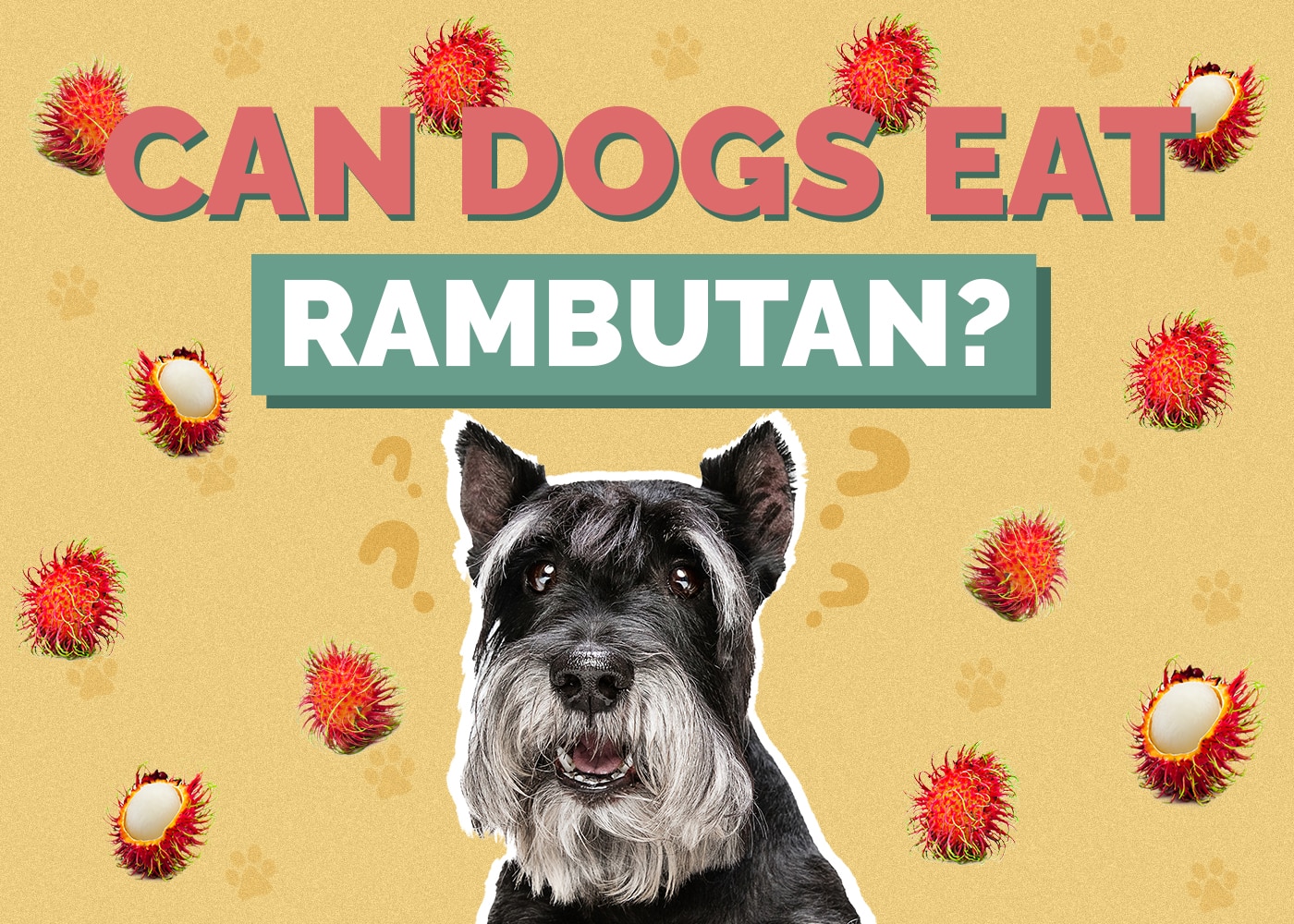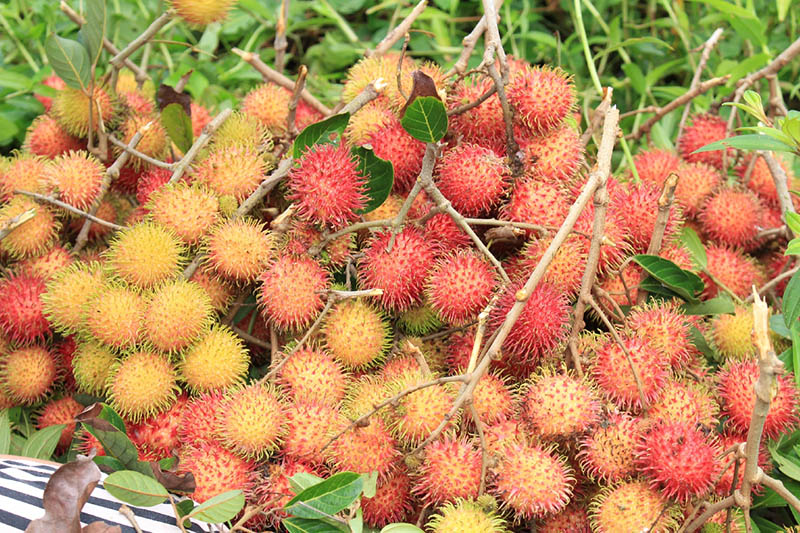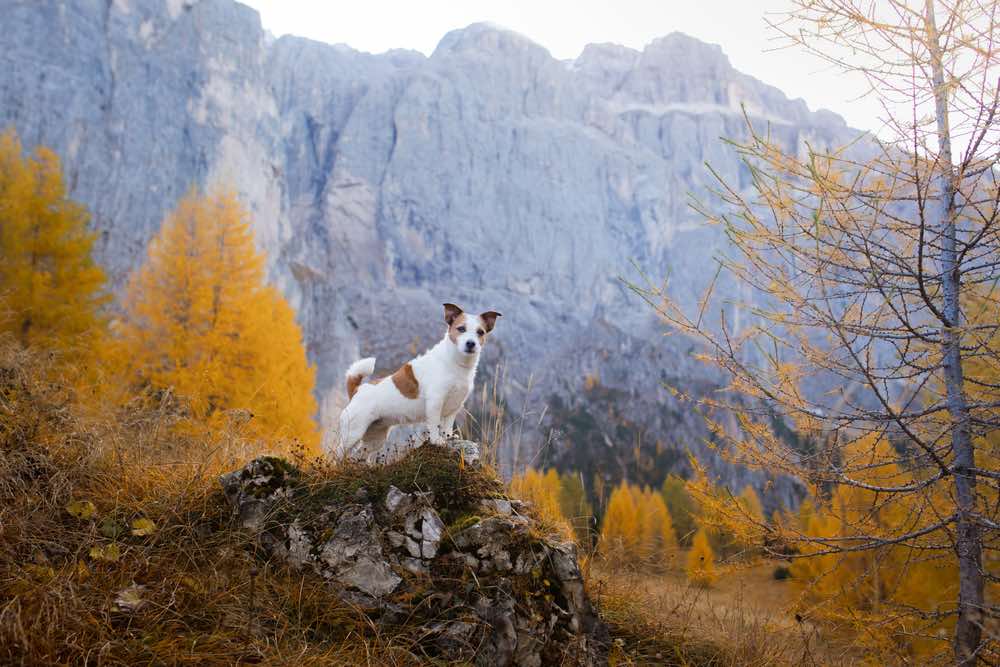Can Dogs Eat Rambutan? What You Should Know!
By Ashley Bates
Updated on

Our omnivorous canines can enjoy a wide variety of fruits and vegetables. While they need to steer away from some plants—like garlic and other members of the allium family—other produce can greatly benefit your dog’s diet.
So, is it safe for our canine companions when it comes to the spiky, interesting-looking rambutan? And if so, how healthy is it? The fleshy parts of rambutan are non-toxic to dogs, but you should remove the skin and seeds before serving. Let’s break it down further.
What Is Rambutan?
Rambutan is a small to medium-sized spiky fruit growing in Indonesian regions. The name “rambutan” translates to hairs, which makes a lot of sense when looking at how this fruit develops. It has tiny spines on it that look like spiky hairs, but inside it’s very different. If you look inside a rambutan, it is very smooth and nearly white. It is related to the lychee plant.
Often, rambutans are compared in taste to grapes, being sweet and slightly acidic. While these fruits are distributed throughout Asia, they are less common in areas like the United States. However, if you have rambutans at your home, you might wonder if they’re safe to have around your dog.
The answer is yes—but caution is warranted because not all parts of these fruits are edible for your pooch.

Rambutan Nutrition Facts
| Serving Size: | 1 Cup |
| Calories: | 175 |
| Sodium: | 24 mg |
| Carbohydrates: | 45 g |
| Dietary Fiber: | 2 g |
| Protein: | 1 g |
| Vitamin C: | 17% |
| Iron: | 6% |
| Calcium: | 5% |
Health Benefits of Rambutan
Rambutan is full of powerful antioxidants with a ton of health benefits. Here are just a few components of rambutan that make it so fabulous.
- Folate, or vitamin B9, helps with blood cell formation. It is also super essential for pregnant mothers. It helps the cells develop in new puppies—and it also helps your dog’s current cells replenish themselves.
- Potassium helps with fluid levels in cells. It requires sodium to function in the body, working together as a team. It also helps skin achieve proper pH levels and regulate blood sugar. It’s a really key element in hair growth and hair loss prevention (meaning a slight reduction in shedding.)
- Fiber helps regulate your pup’s digestive tract, making bathroom habits more predictable and regular. Too much fiber can have negative impacts, like diarrhea. Too little fiber in the diet can cause constipation. So, having an appropriate balance of fibrous materials daily is key.
- Vitamin C is a substance your dog’s body makes on its own, so they don’t require it outside of their regular diet. However, having a little immunity boost is perfectly fine, as this keeps up your dog’s natural health, protecting against germy bacterial and viral organisms.
Peeled Rambutan Fruit Is Harmless to Dogs
Peeled rambutan fruit is entirely harmless to dogs. They can have a bite or two – all is fine in moderation. Just remember to go sparingly, as this is outside of your dog’s regular diet and therefore is not required for their overall health.
Rambutan can provide the same health benefits to dogs as it does to humans to a degree. However, dogs cannot survive on rambutans and other fruits alone—they need a primary staple diet with high protein content.
Parts of Rambutan to Remove
Luckily no part of the rambutan plant is considered toxic to dogs. But they should still not eat this plant’s outer layers and should stay away from stems and seeds. Try to only feed your dog the fleshy parts of this fruit to avoid any bad reaction.
Even though the fruit parts of this particular variety are safe for dogs, the seeds, husks, and spines are not. Make sure to peel the fruit thoroughly and remove any parts that could pose a choking hazard.

How to Feed Your Dog Rambutan
Feeding your dog rambutan will be a fairly straightforward process. You just have to ensure the pieces are suitable in size and everything is peeled, washed, and diced.
- Thoroughly peel your rambutan fruits.
- Wash the fruit.
- Section the fruit into smaller segments to prevent choking.
- Offer pieces to your dog in small increments.
Too many rambutans might cause diarrhea, so make sure to go sparingly and only offer this fruit as a delicacy. Remember that this fruit adds no quality to your dog’s diet and shouldn’t be given more than their standard meals. But it might be a nice little bonus, filled with antioxidants and other helpful nutrients.
Stay under two rambutans at a time to ensure that your dog isn’t filling up on this exotic fruit instead of their regular diet. Too much fiber can cause diarrhea and other gastrointestinal issues.
Final Thoughts
So now you know that this exotic, uncommon fruit is perfectly safe for your dog to eat, permitting that it is perfectly diced and prepared beforehand. The spiny exterior can be a choking hazard, so you’ll definitely not want to give it to your dog unless it’s been thoroughly peeled.
If you choose to share your rambutans, now you can do so, knowing it poses no toxicity risk to your dog. However, if they shoveled in the rambutan without a proper peel or wash, or if gastrointestinal issues or other concerns arise after they eat the fruit, call your vet for further advice.














